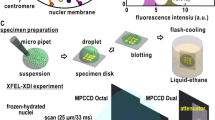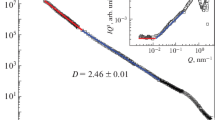Abstract
Dynamic chromosome structure remains unknown. Can fractals and chaos be used as new tools to model, identify and generate a structure of chromosomes?Fractals and chaos offer a rich environment for exploring and modeling the complexity of nature. In a sense, fractal geometry is used to describe, model, and analyze the complex forms found in nature. Fractals have also been widely not only in biology but also in medicine. To this effect, a fractal is considered an object that displays self-similarity under magnification and can be constructed using a simple motif (an image repeated on ever-reduced scales).It is worth noting that the problem of identifying a chromosome has become a challenge to find out which one of the models it belongs to. Nevertheless, the several different models (a hierarchical coiling, a folded fiber, and radial loop) have been proposed for mitotic chromosome but have not reached a dynamic model yet.This paper is an attempt to solve topological problems involved in the model of chromosome and DNA processes. By combining the fractal Julia process and the numerical dynamical system, we have finally found out four main points. First, we have developed not only a model of chromosome but also a model of mitosis and one of meiosis. Equally important, we have identified the centromere position through the numerical model captured below. More importantly, in this paper, we have discovered the processes of the cell divisions of both mitosis and meiosis. All in all, the results show that this work could have a strong impact on the welfare of humanity and can lead to a cure of genetic diseases.
Access this chapter
Tax calculation will be finalised at checkout
Purchases are for personal use only
Similar content being viewed by others
References
Bak, A.L., Zeuthen, J., Crik, F.H.: Chromosoma 199, 46–247 (1977)
Strukov, Y.G., Belmont, A.S.: Mitotic chromosome structure: reproducibility of folding and symmetry between sister chromatids. Biophys. J. 96, 1617–1628 (2009)
Takahashi, M.: A fractal model of chromosomes and DNA replication. J. Theor. Biol. 141, 117–146 (1989)
Chan, T.Y.T.: Unsupervised classification of noisy chromosomes. Bioinformatics 17, 438–444 (2001)
Richardson, C., Horikoshi, N., Pandita, T.K.: The role of the DNA double-strand break response network in meiosis. DNA Repai 3, 1149–1164 (2004)
Lindenmayer, A.: Mathematical models for cellular interactions in development. J. Theor. Biol. 18, 280–315 (1968)
Sedat, J., Manuelidis, L.: A direct approach to the structure of eukaryotic chromosomes. Cold Spring Harb. Symp. Quant. Biol. 42(1), 331–350 (1978)
Mardesen, M.P.F., Laemmli, U.K.: Cell 17, 849–858 (1979)
Author information
Authors and Affiliations
Corresponding author
Editor information
Editors and Affiliations
Rights and permissions
Copyright information
© 2013 Springer-Verlag Berlin Heidelberg
About this paper
Cite this paper
Bouallegue, K. (2013). A New Fractal Model of Chromosome and DNA Processes. In: Stavrinides, S., Banerjee, S., Caglar, S., Ozer, M. (eds) Chaos and Complex Systems. Springer, Berlin, Heidelberg. https://doi.org/10.1007/978-3-642-33914-1_71
Download citation
DOI: https://doi.org/10.1007/978-3-642-33914-1_71
Published:
Publisher Name: Springer, Berlin, Heidelberg
Print ISBN: 978-3-642-33913-4
Online ISBN: 978-3-642-33914-1
eBook Packages: Physics and AstronomyPhysics and Astronomy (R0)




